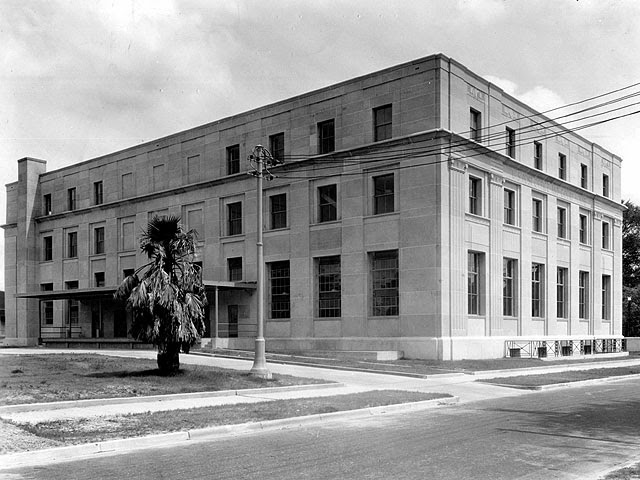Here's the annual me-having-fun-in-some-corner-of-the-country photo:

Thank you to the Association of U.S. Postal Lessors (AUSPL) for having me to their convention in New Orleans this spring!
The above count, in addition to "regular" post offices (incl. stations and branches) and Contract Postal Units (CPUs), includes non-retail USPS facilities not generally intended for public access, such as mail processing facilities and carrier annexes. To wit:
Springfield, MA: Network Distribution Center (NDC)

Washington, DC: Wards Place Carrier Annex:

The count doesn't include previously discontinued facilities, peripheral operations such as Detached Box Units, or Village "Post Offices" (VPOs).
Jackson, MS: Jackson Village Detached Box Unit (DBU):

The former post office at Louis Armstrong International Airport outside New Orleans:

I visited as many as 33 post offices in one day. State by state, counting only distinct active postal locations for the year:
New York: 154 post offices
Focus/Foci: Eastern Hudson River, Syracuse and Glen Falls
Massachusetts: 147
All of Cape Cod, southeastern and southern MA. I completed visiting all Mass. post offices west of the Connecticut River.
Louisiana: 91
Bayous south and east of New Orleans, Baton Rouge
Maryland: 82
D.C. Metro area
Pennsylvania: 41
East-central mountains
Connecticut: 61
Northeastern CT
Mississippi: 39
Southwest Mississippi and Jackson
District of Columbia: 24
New Jersey: 12
Virginia: 9
Rhode Island: 9
Vermont: 6
Delaware: 3
Neither rain nor snow stayed my postal rounds. Post offices can be very photogenic in winter. This month I journeyed to PA to photograph some POs and snag some views of hearty snowy fields on the side.
Eagles Mere, PA:

A highlight of my year was the summer I spent outside Washington, DC by the National Archives in College Park, Maryland. The facility has boatloads of fantastic historic photographs and documents related to post offices/federal buildings and the New Deal artwork they so frequently house.
From the National Archives photo files:
Ilion, NY post office (1936):

Wewoka, Oklahoma (1936)

Old Houston, TX post office (1900):

Abingdon, IL post office relief: "Post Rider"

The best part of the artwork photographs at the National Archives is that they're not under copyright restriction, so you need not feel compelled to use the nonsense "Used with permission of USPS" tagline that its lawyers and Permissions staff force on the public and museums alike.
I've photographed some wonderful artwork at post offices this year, including the 1937 hybrid relief/painting "Eliphalet Remington" in the post office in Ilion, New York, whose exterior 1936 photo was posted above.
Gorgeous, no? There are thousands more from the Archives where all these came from!

While in the D.C. area I also spent a wonderful day at the National Postal Museum! Believe it or not I'd been to more than 6,000 post offices before visiting the museum. Sacrebleu!
Scene from the National Postal Museum:

Speaking of #6,000: the Lakeville Carrier Annex of the Middleborough, Massachusetts post office.

Well, wishing you all a happy 2015. I hope to update the blog on a more frequent basis next year. Cheers!
Evan






































